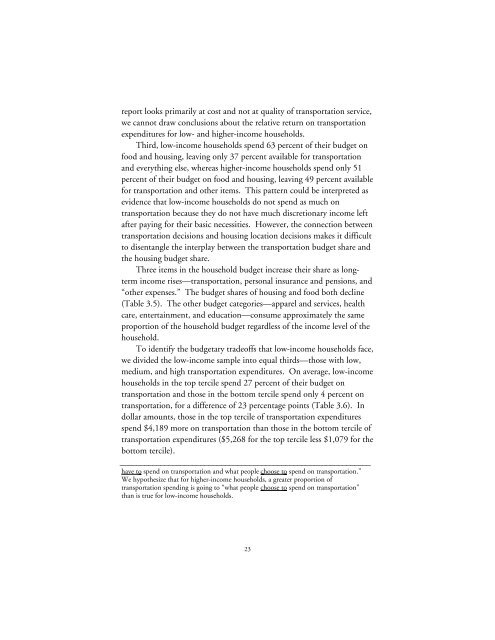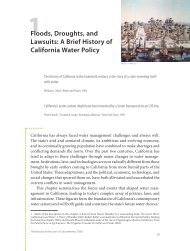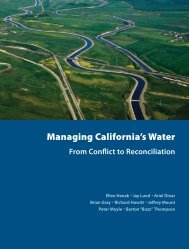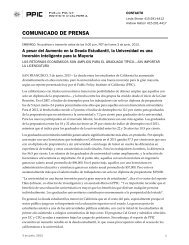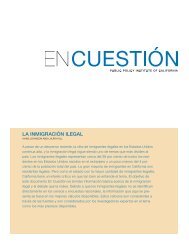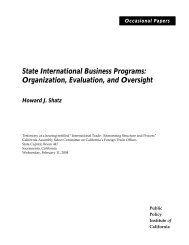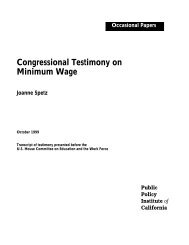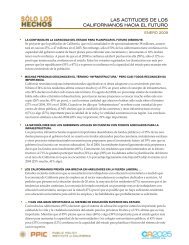Transportation Spending by Low-Income California Households ...
Transportation Spending by Low-Income California Households ...
Transportation Spending by Low-Income California Households ...
Create successful ePaper yourself
Turn your PDF publications into a flip-book with our unique Google optimized e-Paper software.
eport looks primarily at cost and not at quality of transportation service,<br />
we cannot draw conclusions about the relative return on transportation<br />
expenditures for low- and higher-income households.<br />
Third, low-income households spend 63 percent of their budget on<br />
food and housing, leaving only 37 percent available for transportation<br />
and everything else, whereas higher-income households spend only 51<br />
percent of their budget on food and housing, leaving 49 percent available<br />
for transportation and other items. This pattern could be interpreted as<br />
evidence that low-income households do not spend as much on<br />
transportation because they do not have much discretionary income left<br />
after paying for their basic necessities. However, the connection between<br />
transportation decisions and housing location decisions makes it difficult<br />
to disentangle the interplay between the transportation budget share and<br />
the housing budget share.<br />
Three items in the household budget increase their share as longterm<br />
income rises—transportation, personal insurance and pensions, and<br />
“other expenses.” The budget shares of housing and food both decline<br />
(Table 3.5). The other budget categories—apparel and services, health<br />
care, entertainment, and education—consume approximately the same<br />
proportion of the household budget regardless of the income level of the<br />
household.<br />
To identify the budgetary tradeoffs that low-income households face,<br />
we divided the low-income sample into equal thirds—those with low,<br />
medium, and high transportation expenditures. On average, low-income<br />
households in the top tercile spend 27 percent of their budget on<br />
transportation and those in the bottom tercile spend only 4 percent on<br />
transportation, for a difference of 23 percentage points (Table 3.6). In<br />
dollar amounts, those in the top tercile of transportation expenditures<br />
spend $4,189 more on transportation than those in the bottom tercile of<br />
transportation expenditures ($5,268 for the top tercile less $1,079 for the<br />
bottom tercile).<br />
______________________________________________________________<br />
have to spend on transportation and what people choose to spend on transportation.”<br />
We hypothesize that for higher-income households, a greater proportion of<br />
transportation spending is going to “what people choose to spend on transportation”<br />
than is true for low-income households.<br />
23


